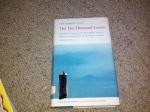|
This section contains 8,922 words (approx. 30 pages at 300 words per page) |

|
SOURCE: Konishi, Jin'ichi. “Waka Composition.” In A History of Japanese Literature, Volume One: The Archaic and Ancient Ages, translated by Aileen Gatten and Nicholas Teele, edited by Earl Miner, pp. 393-417. Princeton, N.J.: Princeton University Press, 1984.
In the following excerpt, Konishi discusses the prevailing style of lyric composition in the Man'yōshū, emphasizing individualistic expression and technical innovation.
From Kotodama to Ga
[Kakinomoto] Hitomaro's chief intent was to use contact with the advances of Chinese civilization to give him personal insight into the indigenous Yamato [or, early central Japanese] culture. And when he turned to express himself in poetry, his guide phrases, which maintained kotodama [the belief that auspicious or inauspicious events occurred as a result of certain turns of phrase], played a crucial role. During the second stage of the Ancient Age, waka poets held to the same way of thought, although there are not a...
|
This section contains 8,922 words (approx. 30 pages at 300 words per page) |

|


